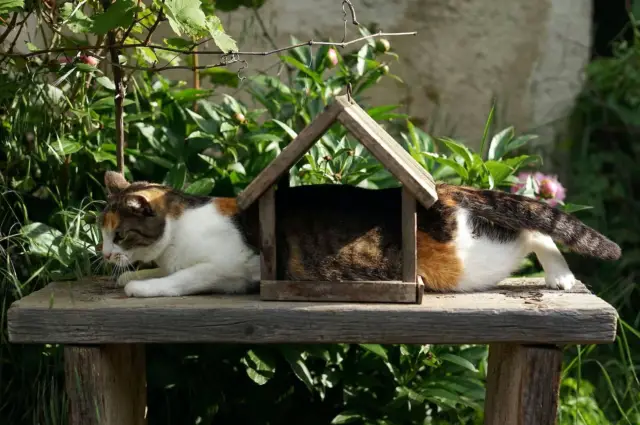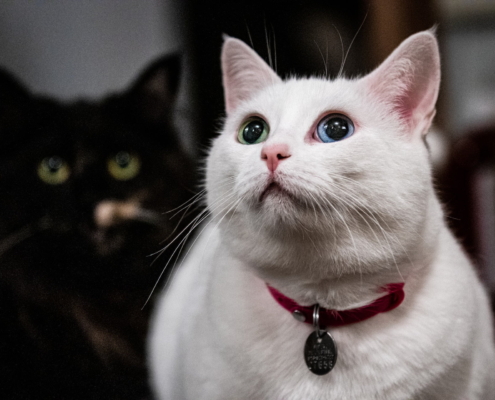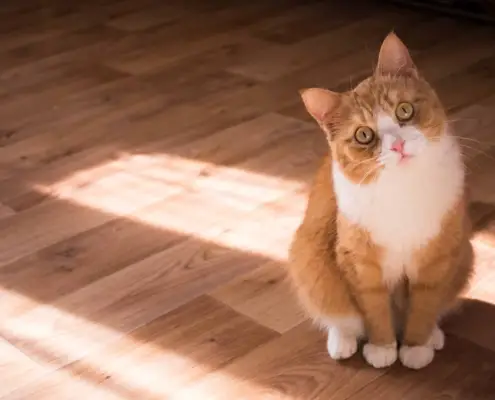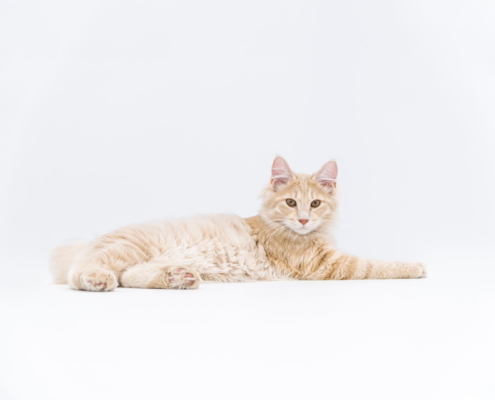
Cats have long been admired for their incredible ability to maintain balance in the most precarious situations. Whether they are climbing trees, walking along narrow ledges, or leaping from high surfaces, cats seem to possess an innate sense of balance that is unmatched in the animal kingdom. But what exactly makes cats so good at balancing?
The anatomy of a cat and its impact on balance
To understand why cats are such adept balancers, we must first examine their unique anatomy. Cats have a flexible and muscular body, with a low center of gravity. This allows them to distribute their weight evenly and make precise adjustments to maintain equilibrium. Their long and lean limbs provide them with a wide range of motion, enabling them to navigate even the smallest of spaces with ease.
The role of a cat’s tail in balancing
One of the key factors that contribute to a cat’s exceptional balance is its tail. The tail acts as a counterbalance, helping the cat to adjust its body position and maintain stability. When a cat is leaping or walking on narrow surfaces, it uses its tail to counteract any shifts in weight, ensuring that it remains upright. The tail also serves as a communication tool, allowing cats to signal their intentions and emotions to other animals.
The inner ear and balance in cats
Another crucial component of a cat’s remarkable balancing ability lies in its inner ear. Cats have a highly developed vestibular system, which is responsible for maintaining balance and spatial orientation. This system contains tiny hair cells that detect changes in head position and movement. With the help of the vestibular system, cats can quickly and accurately adjust their body position in response to any external stimuli, such as sudden movements or shifts in the environment.
The evolutionary adaptation of cats for balance
The exceptional balancing skills of cats can be attributed to their evolutionary history. Cats are descendants of arboreal species, meaning they are adapted to life in trees. Over time, they have developed specialized anatomical features and behaviors that enhance their balance. Natural selection has favored traits that allow cats to navigate through the treetops with agility and grace, resulting in the incredible balance we see in domesticated cats today.
Cat balancing in action: Exploring common acrobatic behaviors
From a young age, cats exhibit a range of acrobatic behaviors that showcase their impressive balancing skills. Whether it’s pouncing on a toy, chasing a laser pointer, or leaping onto high surfaces, cats demonstrate their exceptional ability to maintain balance in various situations. These behaviors not only provide entertainment for cat owners but also serve as a form of exercise and mental stimulation for the feline acrobats.
How cat balancing skills benefit their daily lives
The exceptional balance of cats plays a vital role in their daily lives. It enables them to navigate their environment with ease, whether it’s hunting for prey, escaping from predators, or simply exploring their surroundings. The ability to maintain balance also helps cats conserve energy, as they can move efficiently and avoid unnecessary exertion. Additionally, their exceptional balance allows them to land gracefully and safely from high jumps, minimizing the risk of injury.
The science behind cat balancing: Research and studies
Scientists have been fascinated by the balancing abilities of cats for decades and have conducted numerous studies to unravel the secrets behind their remarkable skills. By studying the anatomy, physiology, and behavior of cats, researchers have gained valuable insights into how these feline acrobats maintain balance in various situations. These studies have shed light on the intricate workings of a cat’s inner ear, the role of their tail in balance, and the neural pathways involved in coordinating their movements.
Tips for improving your cat’s balance and coordination
While cats are naturally gifted balancers, there are ways to enhance their balance and coordination further. Providing your cat with opportunities for exercise, such as climbing trees or using cat trees and scratching posts, can help strengthen their muscles and improve their overall balance. Interactive toys and games that encourage jumping and chasing can also stimulate their natural acrobatic instincts. Additionally, maintaining a healthy diet and weight for your cat can contribute to their overall agility and balance.
Appreciating the incredible balance of feline acrobats
In conclusion, the exceptional balance of cats is a result of their unique anatomy, specialized behaviors, and evolutionary adaptations. Their flexible bodies, low center of gravity, and well-developed vestibular system allow them to navigate their environment with grace and precision. The role of their tail as a counterbalance further enhances their ability to maintain stability. By understanding the secrets behind why cats are so good at balancing, we can better appreciate the incredible acrobatic feats of these feline companions.
If you have a cat at home, take a moment to observe their impressive balancing skills in action. Provide them with opportunities for exercise and mental stimulation to further enhance their natural abilities. And most importantly, cherish the incredible balance and agility that make cats such extraordinary creatures.
If you enjoyed my article, I would appreciate you sharing it with your network.

Sima Ndlebe
Sima writes for CatBuzz. He is interested in Cats, Health and Fitness, and Entrepreneurship.
Published: 15 November 2023



